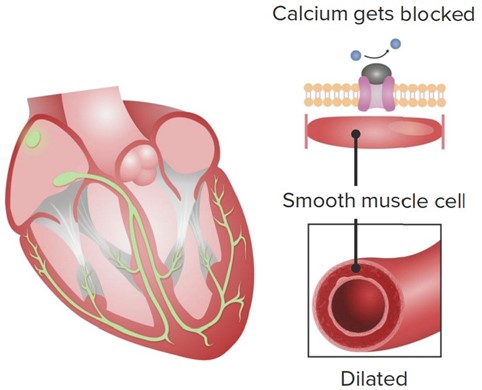What is the usual source of pulmonary emboli
Deep venous thrombosis
Endocarditis
Valvular heart disease
Left heart failure
The Correct Answer is A
A pulmonary embolism (PE) occurs when a blood clot, typically originating from the deep veins of the legs or pelvis, travels through the bloodstream and lodges in one of the pulmonary arteries in the lungs.
Deep venous thrombosis (DVT) is the most common source of pulmonary emboli. DVT occurs when a blood clot forms in the deep veins of the legs, pelvis, or arms, and can develop due to prolonged immobility, surgery, trauma, cancer, pregnancy, hormone therapy, or genetic factors.
Endocarditis, valvular heart disease, and left heart failure are not typical sources of pulmonary emboli. Endocarditis is an infection of the heart valves and lining, which can lead to valve damage and heart failure, but does not usually cause blood clots. Valvular heart disease, which includes conditions such as aortic stenosis and mitral regurgitation, can cause blood flow disturbances and increase the risk of thrombosis, but does not directly cause blood clots. Left heart failure, which occurs when the left ventricle of the heart is unable to pump effectively, can cause fluid buildup in the lungs, but does not typically cause blood clots to form.
Nursing Test Bank
Naxlex Comprehensive Predictor Exams
Related Questions
Correct Answer is B
Explanation
Calcium channel blockers (CCBs) are a class of medications that block the influx of calcium ions into cardiac and smooth muscle cells, leading to relaxation of these muscles and dilation of blood vessels.
In the heart, CCBs primarily affect the L-type calcium channels in the cardiac myocytes, which are responsible for the influx of calcium ions during the plateau phase of the cardiac action potential. By blocking these channels, CCBs decrease the amount of calcium that enters the cardiac myocytes, which in turn reduces the strength of cardiac contractions (i.e. contractility). 
This reduction in contractility can be beneficial in certain conditions where the heart is working too hard or experiencing insufficient blood flow, such as in hypertension, angina, or some forms of arrhythmia. By reducing the workload of the heart, CCBs can help to lower blood pressure, decrease oxygen demand, and improve blood flow to the heart.
While CCBs can also have effects on the rate and rhythm of cardiac contractions, these effects are generally less pronounced than the reduction in contractility. Some CCBs, such as verapamil and diltiazem, can slow the heart rate by blocking the L-type calcium channels in the sinoatrial (SA) and atrioventricular (AV) nodes, while others, such as nifedipine, have little effect on heart rate.
Correct Answer is D
Explanation
Hemoptysis is the coughing up of blood or bloody secretions from the respiratory tract. It is a sign of a serious condition and should be reported immediately to a healthcare provider. In this case, the patient's cold and cough may have led to irritation and inflammation of the respiratory tract, resulting in hemoptysis.
- Hematemesis: This is the vomiting of blood from the upper gastrointestinal tract, which usually appears bright red or dark brown in color.
- Cyanosis: This is a bluish discoloration of the skin and mucous membranes caused by the presence of deoxygenated hemoglobin in the blood.
- Rhinitis: This is the inflammation of the nasal mucosa, often causing a runny nose, nasal congestion, and sneezing.
Whether you are a student looking to ace your exams or a practicing nurse seeking to enhance your expertise , our nursing education contents will empower you with the confidence and competence to make a difference in the lives of patients and become a respected leader in the healthcare field.
Visit Naxlex, invest in your future and unlock endless possibilities with our unparalleled nursing education contents today
Report Wrong Answer on the Current Question
Do you disagree with the answer? If yes, what is your expected answer? Explain.
Kindly be descriptive with the issue you are facing.
